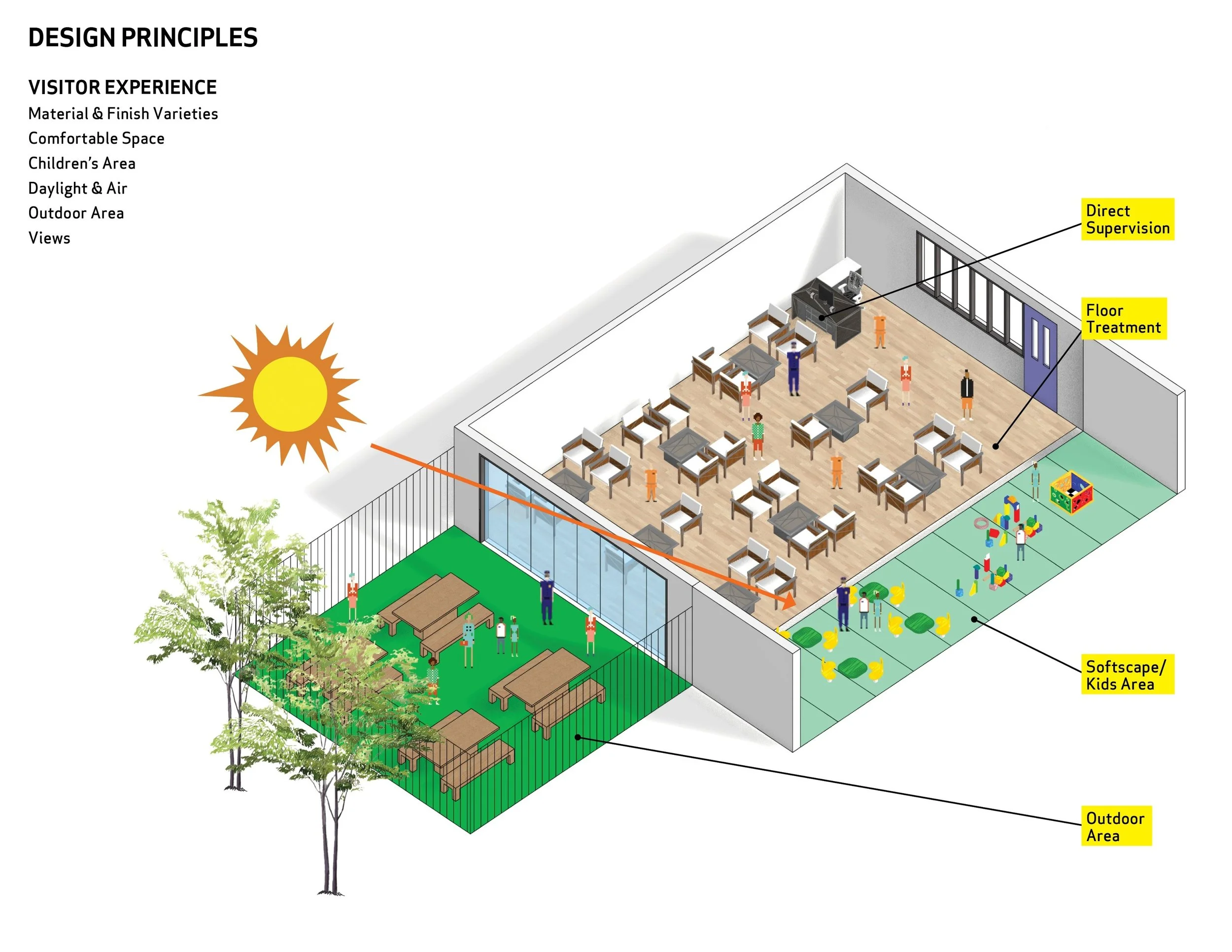New Age Retail
By Nur Atiqa Asri
This past year we’ve been bombarded with headlines claiming ‘retail is dead’ (at least for large chain stores like Macy’s or Radio Shack) but at the same time, we’ve also seen reports that show that physical stores still matter (see: once exclusively online retailers, Everlane and Warby Parker, opening storefronts across the US). Retail, as many experts in the industry would say, is evolving and undergoing an extreme makeover to meet the lifestyle preferences and technological inclinations of the Millennials and their successors. In fact, in a few years, whether we like it or not, every single person will need to be connected via the Internet - young or old, rich or poor.
As we continue to move forward in this digital age, consumers are expecting simpler and seamless processes at home, at work, at play, and of course, at retail stores. Large chain retailers are already making significant investments in technology in-stores to meet these consumer demands for a connected and convenient shopping experience. Meanwhile small businesses are still grappling with a slew of other challenges like leasehold negotiations and high rents; as such, adapting technologically has fallen by the wayside. E-commerce has radically changed the way that many of us shop and even dine, and as a result, restaurants and retailers with brick-and-mortar stores will need to ride the technology wave in order to continue being relevant to the digital-age consumer.
The Tech – Retail Integration
There are so many ways that retailers and brands are using technology to enhance consumer experience, personalize marketing, and improve logistics in physical stores.
Technology is being rapidly used by retailers to collect data from customers’ smart appliances like the Google Home and Amazon’s Alexa, smart phones and other portable devices to better understand their preferences so that they may also personalize marketing tactics. Retailers are using “customer genomes” to create highly personalized offers, promotions and experiences online and in-stores.
For example, Macy’s and Apple are using in-store beacons to provide personalized offers directly to customers via mobile devices. House of Fraser, a department store in the UK, has also inserted beacons into mannequins for similar proximity marketing campaigns. Hugo Boss stores use heat sensors to track customer traffic in its clothing stores, helping store managers organize priority merchandise in high-traffic areas.
Retailers are also growing their online presence to gather more data on existing or potential customers. Walmart Media Exchange, for example, uses data collected not just from store sales and its Savings Catcher loyalty program, but also social-media platforms and third party recommendation sites. From the data, Walmart plans to create its own customer segments, and eventually individual customer profiles, to make better offers and improve targeted marketing.
Technology is being used to build brand and product awareness. Many retailers are educating customers about what’s on offer and sharing products through social media. In particular, many beauty retailers are getting a boost from the rise of the selfie as consumers are referring to stylish looks and trends they see on Instagram, Snapchat or Pinterest as inspiration for product purchases. According to Shelley Haus, vice president of brand marketing at Ulta Beauty, “Social media is shaping consumer behavior… Scrolling through Instagram, the pictures and videos bring things to life in a way that’s super absorbable.”
Sephora has since installed Beauty Boards, or physical social media screens, to enable customers in stores to ‘Like’ a look, tag products used, and ‘Share’ looks with the Sephora beauty community.
As for traditional apparel stores suffering in this digital age, technological advancements are being made in dressing rooms to push even more products on customers who are already very close to making purchases. Marie Claire’s pop-up store in NYC SoHo, termed “The Next Big Thing Concept Shop”, has dressing rooms with interactive mirrors from Oak Labs that recommend accessories for outfits being worn by customers. Similarly, fashion retailer Uniqlo has also piloted a “Magic Mirror” technology from Sharp that allows customers to virtually change the colors of clothing they’re trying on while standing in front of the mirror.
Finally, technology in physical retail stores are making payment methods simpler and customer service more efficient. With a smartphone in most customers’ pockets and imaging technologies now available for scanning products, faster alternative checkout methods will continue to grow across the retail industry, predicts Tony Rodriguez, CTO of digital identification solutions provider Digimarc.
Self-service checkout (Photo credit: Jason Paris)
Self-service checkouts have gotten more sophisticated in grocery stores and have also moved into other retail categories, such as home improvement, fashion and electronics stores. Tesco, a grocery store in the UK for example, is now testing a high-speed checkout solution that automatically scans products placed on conveyor belts.
Integrated mobile apps and “contactless” mobile payments now also enable customers to make seamless cashless transactions, supported by MasterCard and Apple Pay, from anywhere within a store, including fitting room mirrors. The Sephora store at Newbury Street, Boston, for example, has no cash registers because staff associates can process payments digitally, on their phones from anywhere on the floor of the store.
Across the globe, in Southeast Asia, even hawker centers, a food service establishment that originated in the 1960s in Singapore and now predominantly run by older generations, are adapting with technology to ensure it continues to survive in the current retail flux. Cashless payment methods are being rolled out across all hawker centers to promote faster customer service during peak dining hours.
Of course, many of these technological tools that enhance retail performance are still expensive to acquire and install. Unfortunately, for small businesses, there are major hurdles to overcome before they might be able to maximize technology in physical retail stores. Small business owners will first need to be educated and convinced of the benefits of these technologies. Following that, they will also need financial support to acquire, install and manage these tools.
Small business offices, chambers of commerce and business improvement districts that are already offering assistance to local retailers to do storefront improvements or interior store upgrades are more than well-poised to invest in these technological advancements by providing technical and financial assistance. Small business offices across the United States need to encourage small business owners to think about technology as a tool that can help them increase their market share and become more profitable.
The Hospitality – Retail Integration
The advancement of technology within retail stores will serve to deliver a seamless shopping experience for customers. However, even with all of these gadgets, customers are still walking into brick-and-mortar stores to get a personable and unique experience. The 2015 report on Navigating the New Digital Divide by Deloitte found that “one in three customers still prefer to consult store associates for assistance when selecting and validating products.” Retailers must therefore learn to balance both the human experience and technological convenience in physical stores to attract consumers in the digital age. Retailers therefore must also become curators and storytellers who create unique experiences for customers.
Today, the physical store must offer more than a digital website can. While we can read and hear stories through our smart phones and computers, our sense of touch, taste, and smell need to be engaged in physical stores. Retailers are finding more innovative ways to engage customers in-store with tasting sessions, product testings, live music performances, and personalization services. Even tech giant Google recently launched a pop-up store in New York City that enabled customers to test the company’s products in a fun “voice-activated game” centered around the popular Netflix series, “Stranger Things”. Thousands of customers lined up to get in-store to try a round of the game and to test Google’s augmented reality products. Retail is fast fusing with the hospitality industry.
Retail collectives such as Story and Bulletin, for example, curate products by various artists in a single physical store according to themes. Customers entering these stores therefore experience different trends and issues with every visit. Products sold become a part of a larger story. While Bulletin’s overarching theme is FEMALE brands, Story’s theme changes monthly from ‘LOVE’ to ‘WELLNESS’ and ‘ART’.
Other chain retailers have also started to adopt this experiential approach to retail, putting the customer ahead of the product. This year, popular shoe brand Timberland opened a new store concept called Tree Lab in its outlet at the King of Prussia mall in Pennsylvania. The curated gallery of Timberland products is pegged to a theme that rotates every six weeks. The first theme, “Streetology”, highlighted styles and shoes created for urban environments. Six weeks later, the theme changed to “SHEvolution” with products aimed exclusively at women.
Beyond curating products, retailers also need to become event planners. Food and drinking places have long been engaged in event planning and serve as a great example for retailers. Even hawker centers in Singapore are actively planning events to cultivate vibrant environments for younger diners with local music performances.
Madewell in-store event
Today, department stores, apparel stores, and even hardware stores are offering regular events in-stores to generate foot traffic. These events range from simple free product testings and educational sessions to chef and stylist consultations. Stores like Home Depot and Williams-Sonoma are hosting classes to teach basic skills such as how to mow the lawn or how to bake a cake. Meanwhile, Bloomingdales and Madewell offer soirees for its most loyal customers with live musical performances and free drinks and caviar.
Although curating products and actively planning in-store events cost time and money (especially for small business owners), downtown organizations and chambers of commerce can show support by helping to market in-store events and activities collectively through newsletters and social media. Often, marketing in-store events is one of the biggest costs to retailers that don’t yet have a large customer outreach. Downtown Morganton, in North Carolina, for example, has a robust and widely-subscribed weekly newsletter “D4U” that is populated with activities organized by individual stores downtown and has been successful in informing existing customers of new store openings and in-store events.
So, as we move into 2018, let’s accept that retail is not dead.
Retail is changing. And retailers – big and small – need to adapt. Organizations and municipalities need to understand that changing shopper preferences and lifestyles and, rapid technological advancements in retail will drive retailers to kick old habits and pick up new ones. Offering support to small businesses so that they are able to adopt new habits will be crucial to saving our mom-and-pop shops, and we must start with educating these business owners about the importance of technology and storytelling and curating in retail stores. This will be the great first step towards ensuring their entry into the great new age of retail.





